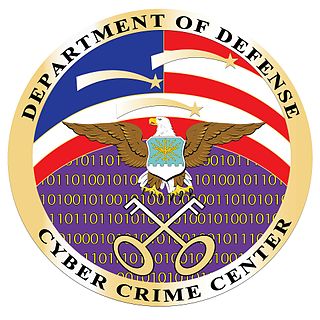| Jonathan Grier | |
|---|---|
| Nationality | United States |
| Known for | Stochastic forensics |
| Scientific career | |
| Fields | Computer Science |
Jonathan Grier is a computer scientist, consultant, and entrepreneur. He is best known for his work on stochastic forensics and insider data theft. [1] [2] [3] [4] He has also contributed to computer security, digital forensics, and software development. [1] [4] [5]
A computer scientist is a person who has acquired the knowledge of computer science, the study of the theoretical foundations of information and computation and their application.
Stochastic forensics is a method to forensically reconstruct digital activity lacking artifacts, by analyzing emergent properties resulting from the stochastic nature of modern computers. Unlike traditional computer forensics, which relies on digital artifacts, stochastic forensics does not require artifacts and can therefore recreate activity which would otherwise be invisible. Its chief application is the investigation of insider data theft.
Data theft is a growing phenomenon primarily caused by system administrators and office workers with access to technology such as database servers, desktop computers and a growing list of hand-held devices capable of storing digital information, such as USB flash drives, iPods and even digital cameras. Since employees often spend a considerable amount of time developing contacts and confidential and copyrighted information for the company they work for, they may feel they have some right to the information and are inclined to copy and/or delete part of it when they leave the company, or misuse it while they are still in employment. They can be sold and bought and then used by criminals and criminal organizations. Alternatively, an employee may choose to deliberately abuse trusted access to information for the purpose of exposing misconduct by the employer; From the perspective of the society such an act of whistleblowing can be seen as positive and is in certain situations protected by law in some jurisdictions, such as the USA.
Contents
Grier is a frequent speaker at computer conferences such as Black Hat, ACSAC, and DFRWS. [6] [7] [8] [9] His research has appeared in the Journal of Digital Investigation, SecurityFocus, Digital Forensics Magazine and InformationWeek. [1] [2] [5] His work has been cited by Microsoft Press, IBM Internet Security Systems, Hewlett-Packard, SC Magazine and the FBI National Infrastructure Protection Center. [4] [10] [11] [12] [13] [14] [15]

Black Hat Briefings is a computer security conference that provides security consulting, training, and briefings to hackers, corporations, and government agencies around the world. Black Hat brings together a variety of people interested in information security ranging from non-technical individuals, executives, hackers, and industry leading security professionals. The conference takes place regularly in Las Vegas, Barcelona, London, Abu Dhabi. The conference has also been hosted in Amsterdam, Tokyo and Washington, D.C. in the past.
SecurityFocus is an online computer security news portal and purveyor of information security services. Home to the well-known Bugtraq mailing list, SecurityFocus columnists and writers included former Department of Justice cybercrime prosecutor Mark Rasch, and hacker-turned-journalist Kevin Poulsen.

InformationWeek is a digital magazine which conducts corresponding face-to-face events, virtual events, and research. It is headquartered in San Francisco, California and was first published in 1985 by CMP Media, later called UBM Technology Group.
Grier is an advisor to private clients in computer security, software development and information technology, [4] and conducts training in computer security and forensics for private clients and the Department of Defense Cyber Crime Center. [16]
Computer security, cybersecurity or information technology security is the protection of computer systems from theft or damage to their hardware, software or electronic data, as well as from disruption or misdirection of the services they provide.
Software development is the process of conceiving, specifying, designing, programming, documenting, testing, and bug fixing involved in creating and maintaining applications, frameworks, or other software components. Software development is a process of writing and maintaining the source code, but in a broader sense, it includes all that is involved between the conception of the desired software through to the final manifestation of the software, sometimes in a planned and structured process. Therefore, software development may include research, new development, prototyping, modification, reuse, re-engineering, maintenance, or any other activities that result in software products.
Information technology (IT) is the use of computers to store, retrieve, transmit, and manipulate data, or information, often in the context of a business or other enterprise. IT is considered to be a subset of information and communications technology (ICT). An information technology system is generally an information system, a communications system or, more specifically speaking, a computer system – including all hardware, software and peripheral equipment – operated by a limited group of users.









